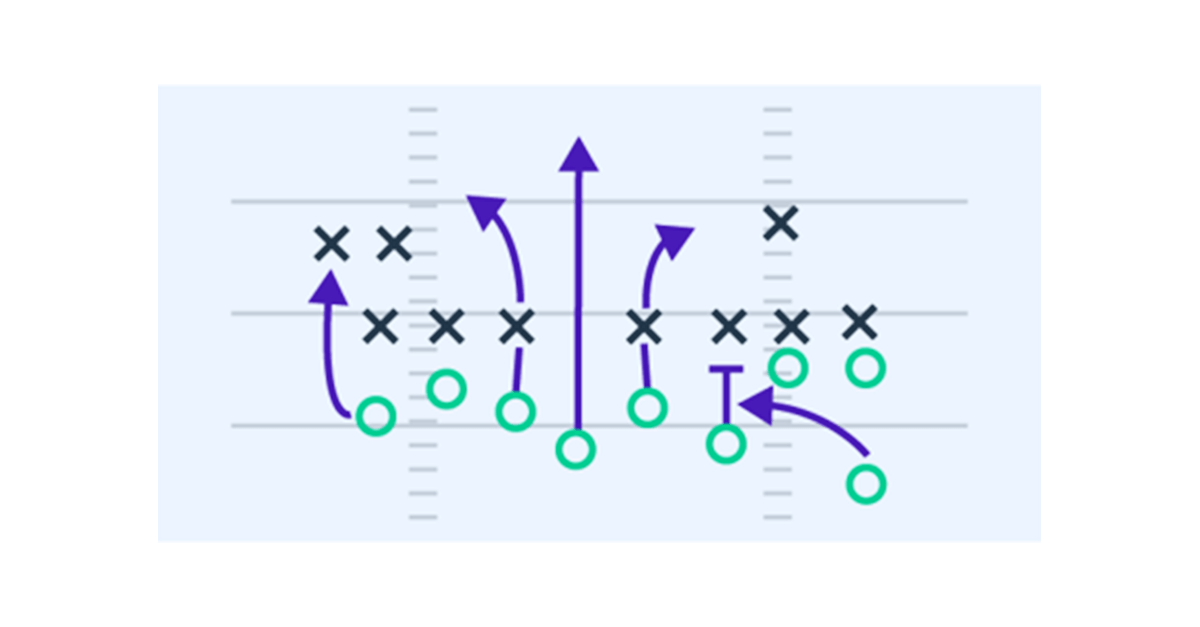1 min read
Mastering startup financial models: A quick cheat sheet for founders
Some founders don’t think about creating a startup financial model until it’s too late. It’s easy to do. You’ve got your nose to the grindstone,...
6 min read
 Jeff Erickson
October 23, 2025
Jeff Erickson
October 23, 2025
Running a startup is like launching a rocket - exciting, bold, and full of unknowns. But managing large sums of money takes more than just great ideas. You need a simple way to track your cash to grow, attract investors, and keep things running smoothly. That’s where your cash flow statement comes in.
Without it, even the best startups can run out of money fast. You might overspend, miss key opportunities, or struggle to plan ahead. A clear startup cash flow statement helps you avoid costly mistakes. It’s your roadmap to staying financially strong.
In this guide, we’ll break it down step by step, making it easy to follow. You’ll learn how to create one and why it’s a must-have for your startup’s success. Ready to wrap your mind around the mysterious cash flow statement? Let’s get started!
Key takeaways

A startup cash flow statement is a simple way to track your money. It shows how cash moves in and out of your business over time. Unlike a balance sheet, which captures a single moment, this focuses on actual cash transactions. It also differs from an income statement, which includes non-cash items.
You can think of it like the dashboard of your rocket. It tells you where your fuel (cash) comes from and where you're spending it. More importantly, it helps you see if you have enough to keep going. If you've ever played a resource management game, you get the idea. Without it, you could run out of cash before reaching your goal.
A startup’s cash flow statement typically has three key sections: operating, investing, and financing. Each one tells a different part of your financial story.
For startups, cash is king, and the cash flow statement is the throne. Knowing if you have enough money in the bank is not enough, it's also important to understand where your cash comes from and how you use it.
A solid cash flow statement helps you:
A startup cash flow statement shows how money moves in and out of your business. Over time, it reveals important patterns that can impact your financial health. By reviewing your cash flow, you can see if your startup has enough money to cover debts. Spotting potential problems early can help you anticipate challenges and make proactive decisions to optimize your financial health.
Investors are like mission control. They don’t just want profits - they want to know if your startup is healthy, efficient, and resilient.
When pitching to investors, your cash flow statement can help build trust. Show that you’re in control of your financial future. Highlight growth by showcasing smart investments in operations, marketing, or infrastructure. Prove you’re prepared by addressing challenges with clear, data-backed solutions.
A cash flow statement might look confusing at first, filled with numbers and financial terms. But once you break it down, it’s not too hard to understand. Grab a cash flow statement - whether it’s your own or an example - and take a closer look. What you'll want to look out for are these three things:
While these are the key elements to focus on when you're starting out, there’s definitely more to the story. With time, you’ll get better at spotting deeper trends and nuances. But for now, mastering these basics is a great first step to giving you a solid foundation to understand your cash flow and make smarter decisions for your startup.
A startup cash flow statement gives you important insights - if you know where to look. As we have discussed, it tells you whether your startup is cruising smoothly or needs a quick tune-up. By understanding these numbers, you can see if you’re ready for high-speed growth or need to slow down and adjust.
Note: For a deeper dive, try going back to the three pillars of the cash flow statement that we talked about earlier.
For the operating activities (how much cash your core business activities are generating), check if the numbers are consistently positive. If they aren't, it's worth examining whether your operations are sustainable. For your investing activities (cash flow tied to long-term growth), outflows in this section often indicate investments in equipment or technology. But keep an eye on whether these expenses stretch your cash reserves too thin.
Lastly, healthy financing activities (reflecting how your business is funded) show that your growth is supported by a balance of internal and external resources.

Cash flow isn’t just about having more money coming in than going out. If you were piloting a spaceship, you wouldn’t just stare at signals on a screen. You’d analyze them to stay on course.
The same goes for business. You need to track key numbers like working capital and the cash conversion cycle. These show whether you have enough resources to keep things running smoothly and reveal how quickly your investments turn into usable cash.
|
Ratio |
Calculation |
Insight |
|
Working Capital Ratio |
Current Assets/Current Liabilities |
Shows the ability to cover short-term obligations. |
|
Days of Inventory Outstanding + Days Sales Outstanding - Days Payable Outstanding |
Reveals the time to convert investment into cash. |
Now you know that understanding a cash flow statement is one thing, but building one is another task. Luckily, it doesn’t have to be hard. If you love a challenge, you can create one from scratch. But why go through all that when templates already exist?
You can find ready-made cash flow templates in Excel, Google Sheets, and QuickBooks. These tools help organize data and calculate net cash flow automatically. Plus, programs like Xero and accounting templates in Excel make the process even easier.
Here’s a simple step-by-step guide for what you need to do to build your own startup cash flow statement.
Your cash flow statement connects the dots between where you’ve been (previous balance sheets) and where you’re headed. But remember: for accuracy in preparing these statements, seek professional help.
Just like an astronaut is backed by a team of specialists, founders should seek professional advice when navigating complex financial data. A skilled CFO can ensure they're interpreting their cash flow panel accurately, especially if they're unsure of their startup's cash accounting practices or how to use the statement to inform their decisions.
An income statement and a cash flow statement both give financial insights, but they work differently. The income statement includes non-cash items like depreciation. On the other hand, the cash flow statement only tracks real cash movement.
Profit is your total revenue minus expenses, while cash flow tracks the actual movement of money. A business can be profitable but still struggle with cash flow. This happens when money is stuck in unpaid invoices or long-term investments.
It depends on your business stage, but reviewing it monthly or even weekly can help you stay on top of cash flow fluctuations, especially in the early stages or during rapid growth.
You can start by using common strategies, such as negotiating longer payment terms with suppliers, shortening customer payment cycles, cutting unnecessary expenses, and focusing on higher-margin products or services.

Building a startup means aiming high while making smart choices every day. A cash flow statement isn’t just a bunch of numbers - it’s your reality check. It shows exactly how money moves in and out of your business. With this clarity, you can make confident, well-informed decisions.
However, even the best tools need regular attention to stay useful. Pilots don’t ignore their control panels mid-flight, and founders can’t afford to overlook cash flow. Both are key to navigating uncertain situations. Checking in often helps you spot risks early and grab new opportunities.
Paired with other tools in your financial modeling kit, your statement gives you the confidence to plan ahead, adapt, and keep your startup moving in the right direction. So, keep checking in, stay curious, and let your numbers guide you toward your next big win.
Get notified about new events, free resources, and fresh content

1 min read
Some founders don’t think about creating a startup financial model until it’s too late. It’s easy to do. You’ve got your nose to the grindstone,...

When you’re trying to raise capital for a startup, no tool is more valuable than a solid financial model. With a good model in your corner, you have...

The learning curve is always steep when you’re starting a new business from scratch. You don’t always know which marketing channels will be...